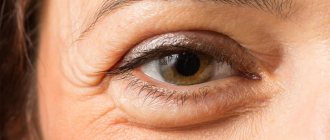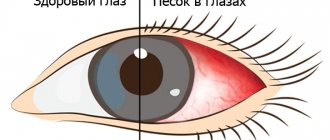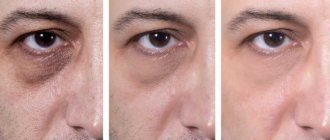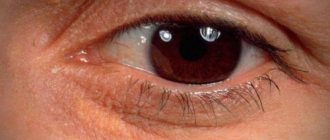Redness after diapers: what is the reason?
The appearance of a red rash on a baby's bottom often causes great concern among parents, since mom and dad do not know what exactly caused this reaction. What are the prerequisites for the emergence of this problem?
- Insufficient compliance with hygiene rules. Normally, you need to wash your baby in the morning, in the evening and after each bowel movement. If at the moment you do not have the opportunity to wash the baby, you can use hypoallergenic baby wipes. However, you should not overuse them, since even the best quality wet wipes are not able to completely clean the surface of the skin from microscopic particles of urine and feces.
- Keeping a baby in a diaper for a long time. When a baby is in diapers for a long time, his skin suffers from the “greenhouse effect”, resulting in diaper rash and redness.
- Constant friction. If you use a diaper that is not the right size for your child, irritation will occur where it comes into contact with the skin. Allergy. Diapers, wet wipes and baby soap usually contain hypoallergenic components, but they may also contain potentially dangerous ingredients - preservatives, parabens, fragrances. Therefore, before purchasing, be sure to study the composition of these products.
- Overheat. The thermoregulation of a newborn differs in many ways from the thermoregulation of an adult. The same applies to the baby’s sweat glands, which work differently than in older age. To prevent overheating and excessive sweating, it is recommended to use moderation when dressing your child and also monitor the room temperature.
In children
The skin of babies is very delicate. Reacts immediately to any temperature fluctuations. The spots on babies appear due to prickly heat. Sometimes it only takes a couple of hours for a significant diaper rash to appear in the cavity.
Such redness causes discomfort to the little ones. If they are detected, you should immediately treat the damaged area - rinse gently with warm water, blot with a clean towel and apply cream (usually Bepanten).
A red spot under the armpit of an older child usually indicates an allergy. Sometimes tight or uncomfortable clothing rubs against the hollows, resulting in redness.
Redness from diapers in newborn boys and girls: is it dangerous?
A baby's skin is significantly different from an adult's skin. It is much more delicate, and therefore can be easily injured under the influence of external irritants. In addition, in the first months of a child’s life, the stratum corneum of his epidermis has a low density, which is why the skin is quite loose. At this time, the baby’s skin is rich in lipids, one of the functions of which is to protect the skin from feces. Under the influence of lipids, fat-soluble elements that are harmful to the child that are part of urine and feces are broken down. However, it is precisely this protective reaction of the child’s body that often leads to the appearance of irritations on the skin.
Diaper redness in itself is not dangerous. If you change diapers and diapers on time, wash your baby and give him “air baths,” the irritation will quickly go away. If adults do not pay due attention to maintaining the child’s groin area, his buttocks and inner thighs in normal condition, the problem can take a more serious form. This is due to the fact that in the first months of life the baby’s body is especially vulnerable to various pathogenic microorganisms. As a result of the development of an advanced form of diaper dermatitis, ulcers and cracks appear on the skin, which can easily become infected. In case of infection and the onset of the inflammatory process, swelling and purulent elements may occur, accompanied by pain and an increase in local temperature.
Protecting the skin from irritation in children with weakened immune systems, as well as in premature babies, deserves special attention. The protective functions of their skin are insufficient. As a result, in the presence of severe redness from diapers, accompanied by diaper rash and the appearance of weeping erosions, there is a danger of the onset of a serious inflammatory process.
Redness around the eyes. Redness of the skin around the eyes: causes and treatment
Skin is an organ responsible for the process of interaction of the human body with the external environment. The skin around the eyes is especially different in the dermatology niche. She is almost devoid of subcutaneous fat, and accordingly, she is most susceptible to negative external factors. One of the unpleasant manifestations of unwanted contact is redness of the skin around the eyes.
According to dermatologists, redness of the skin and its peeling around the eyes is most often a consequence of the use of inappropriate cosmetics or a complete lack of care for these areas of the face.
Causes
Redness of the skin around the eyes can be caused by a number of factors, including:
- reaction to cosmetics;
- allergic reaction. Allergens can include: medications, plant pollen, pet hair, dust, food industry components;
- infection of the conjunctiva of the eye, which can be caused by staphylococci, streptococci, viral agents with subsequent development of the inflammatory process;
- entry of a foreign body into the organ of vision;
- diseases of internal organs. These may be pathological processes of the urinary system, gastrointestinal tract, circulatory system;
- failure of metabolic processes;
- skin diseases (rosacea);
- infectious pathologies;
- insect bites;
- overwork, stress, lack of sleep;
- avitaminosis;
- climate impact.
Symptoms
Depending on the cause of the unpleasant abnormalities, the patient may experience the following symptoms:
- change in the color of the skin around the eyes;
- peeling around the eyes;
- tooth skin around the eyes;
- burning;
- the appearance of swelling of soft tissues;
- lacrimation;
- sensation of a foreign body in the eyes;
- redness of the eyeballs;
- feeling of tight, dry skin;
- pain in the eyes;
- sensitivity of the organs of vision to sunlight.
Diagnostics
In some cases, it is possible to diagnose the presence of an allergic reaction independently. To do this, you need to track the frequency of the appearance of redness and try to connect this process with the use of new cosmetics or eating certain foods.
If you cannot determine the allergen, and undesirable symptoms persist, you should consult a specialist.
To identify ophthalmic diseases accompanied by redness, the following is carried out:
- visual acuity test;
- fundus examination;
- measurement of intraocular pressure;
- taking samples from the conjunctiva;
- biomicroscopy.
If the development of eye diseases has been ruled out, the patient is recommended to undergo an allergen test, consult a dermatologist to identify the development of skin diseases, or see another specialized specialist.
Diseases
A change in the color of the skin around the eyes may indicate the development of the following ophthalmological diseases:
- Conjunctivitis. A disease associated with the development of the inflammatory process of the conjunctiva, which is the upper layer of the organ of vision and has a protective function of the eye. This is the most common eye pathology.
- Blepharitis. Inflammation localized at the edges of the eyelids, which is caused by a bacterial infection. It can have both a chronic and acute form and is most often found in people over 40 years of age.
- Meibomite or internal stye. A rare disease characterized by the development of inflammation of the meibomian gland due to infection.
- Demodectic mange. A disease that is caused by an opportunistic spider mite that parasitizes the gland duct and hair follicles of the eyelashes.
Treatment
If you have an allergy, unwanted redness disappears after identifying and subsequently blocking the allergen. In this case, antihistamines, corticosteroids or various creams are taken.
To avoid exposure to climatic factors, you should protect the skin around your eyes with a scarf or sunglasses.
If you have vitamin deficiency, it is recommended to start taking a vitamin complex previously agreed with your doctor.
If the cause of the redness is an infectious disease, then the attending physician, after conducting a series of tests, prescribes antibiotics.
The antibacterial agent Albucid helps get rid of unwanted symptoms associated with foreign bodies getting into the eyes.
To enhance the effect of the main treatment, it is allowed to use traditional medicine recipes in the form of parsley compresses, chamomile infusion, tea bags, etc.
Thus, redness of the skin around the eyes can be a consequence of external or internal factors. The clinical picture is complemented by photophobia, lacrimation, discomfort in the eyes, etc. The therapeutic course is prescribed by an ophthalmologist depending on the cause of the symptom.
The baby has redness under the diaper: what to do first?
If you find that your baby has pimples and a red bottom under his diaper, don't panic. The main thing to do in this case is to relieve irritation and prevent the onset of the inflammatory process. If the redness is minor, it is recommended to rinse the buttocks, groin area, external genitalia and inner thighs with chamomile decoction at room temperature. In the presence of small diaper rash and red rash, it is advisable to use hypoallergenic baby powder (make sure that the baby does not accidentally inhale) or a special cream (to reduce friction and moisture).
If there is an advanced form of irritation, accompanied by swelling and inflammation, do not self-medicate, but seek medical help as soon as possible. Remember: in difficult cases, it is the pediatrician who must decide how to treat diaper rash.
What to do if the skin under the breasts is irritated?
Elimination of redness of the skin under the breasts requires a combination of medicinal and hygienic methods. If only redness appears, you can get by with creams and keeping the problem area clean. And if acne, itching and other alarming symptoms appear, it is advisable to consult a doctor for a diagnosis.
To relieve skin irritation, you can do the following on your own:
- Wash the problem area of the skin with soap at least 2 times a day, and then smear it with absorbable cosmetic anti-inflammatory creams.
- Choose a bra made from natural fabrics and without rigid elements that support the breasts.
- For excessive sweating, use baby powder for diaper rash.
- Wear clothing that is as breathable as possible.
- Take a bath once a day with decoctions of string, oak, and chamomile.
- Avoid contact with the allergen if allergic dermatitis is suspected.
- Provide adequate nutrition if inflammation occurs due to vitamin deficiency and decreased immunity.
These hygiene procedures can be carried out at home. In addition to them, for dermatitis of the skin under the breasts, a consultation with a dermatologist is required to prescribe basic drug therapy.
Question to the expert
My daughter is 15 years old, her breasts are actively growing, severe irritation and a rash appeared under one breast. Under the second, the symptoms are somewhat less. What kind of disease could this be, and what can you do to relieve the itching? Maybe there are folk remedies?
Your daughter may have ordinary heat rash or diaper rash, because breasts with active growth require careful care. You can try the hygiene procedures described above for 3-4 days. If the irritation does not subside, consult a dermatologist.
Red bottom from diapers: what to do to prevent redness?
You can avoid the appearance of rashes, irritation and red pimples under your diaper if you follow simple preventive measures:
- It is necessary to minimize contact of the baby's delicate skin with fecal residues. To do this, it is recommended to wash the child every time after defecation, using clean warm (not hot!) water.
- After completing the hygiene procedures, you need to carefully blot the child’s groin area and bottom with a soft cotton towel. In this case, you should avoid sudden rubbing movements, as they can cause new irritations.
- The baby's skin must breathe. To do this, it is recommended to reduce the time of her contact with diapers, limiting the use of these products only at night and during walks. In addition, it is advisable to leave the baby without clothes for 10-20 minutes every day to ensure a flow of fresh air to the skin (air baths).
- It is necessary to change the diaper every 1–3 hours during the day and at least once at night, as well as in case of severe soiling.
- Particular attention must be paid to choosing suitable diapers. It is advisable to opt for disposable three-layer ones made of hypoallergenic materials. It is also important to choose the right size: using a diaper that is too large can lead to leakage, while using a diaper that is too small will chafe delicate skin.
- The occurrence of red diaper rash is influenced by the newborn's feeding habits. Breastfed babies are less likely to suffer from irritation than formula-fed babies. This is due to the difference in the composition of children's excrement: in infants who receive mother's milk, fecal enzymes have less activity, as a result of which the likelihood of developing irritation is reduced.
- To wash your baby's things (including cloth diapers, if you use them), you need to use special baby washing powders and conditioners that do not cause irritation.
- Monitor the temperature and humidity in the room where the baby is. If the room is too warm and/or humid, your baby's bottom will be more likely to develop diaper rash and redness.
- Using a suitable diaper redness cream or ointment is important. To protect your baby from irritation, diaper rash and redness, you can use a product from the La Cree brand - Diaper Cream. Its non-hormonal composition, which includes active ingredients such as zinc oxide, panthenol, jojoba oil, shea butter, beeswax and licorice extract, provides delicate care for the baby's groin area and buttocks. As a result of using this product, the baby’s skin receives the necessary protection from irritation and remains soft and velvety. The composition of the cream is completely safe, so this product can be used from the first days of the baby’s life.
Following these simple rules will help you protect your baby's tender bottom from the appearance of a red rash and keep her skin soft and healthy.
Why does severe irritation occur under the breasts?
Severe irritation under the mammary glands rarely occurs unexpectedly. However, if a provoking factor, especially an allergen, gets into the fold between the chest and the body, symptoms of dermatitis can develop within a few hours. Contact with animals, unusual foods, synthetic bra fabric and other allergens can cause a reaction.
A new bra can also chafe unnoticed during the workday. Excessive sweating and allergies to fabric, which, when rubbed, comes into close contact with the skin, can aggravate the mechanical impact.
Ignoring early symptoms such as rash, diaper rash, itching and redness can also lead to severe irritation under the breasts. Independently making an incorrect diagnosis with inadequate treatment can cause complications. For example, treating a fungus with antibiotics will only contribute to the progression of the disease.
With severe inflammation, an infectious infiltrate of a transparent or whitish color with an unpleasant odor may accumulate under the chest fold. This situation requires a mandatory visit to the doctor, because the antibiotics necessary for treatment often have different regional effectiveness.
Question to the expert
A week ago, redness in the form of uneven spots appeared on the skin under the left breast. There seemed to be no reason for their appearance; the mammary gland became a little larger and itched below. How to get rid of this? Maybe there is an ointment for such irritation on the chest?
It is unlikely that you have simple irritation or dermatitis. Symptoms indicate that the mammary gland is involved in the process. It could be mastitis, fungus, and much more. If creams and hygiene procedures have not helped in a week, then it is better to see a mammologist and dermatologist.
Redness from diapers in adults
Despite the fact that this problem is considered primarily for children, adults also face it. Diapers are mainly used for bedridden patients, the elderly, as well as for people whose activities imply the impossibility of visiting the toilet on time - for example, for astronauts, climbers, etc. To avoid redness and inflammation, adults are also recommended to use emollient external agents that prevent the occurrence of diaper rash and irritation.
Sources:
- N.M. Sharova, Approaches to the treatment and prevention of diaper dermatitis, Medical Council journal, 2018 https://cyberleninka.ru/article/v/podhody-k-lecheniyu-i-profilaktike-pelenochnogo-dermatita
- Marushko Yu.V., Prevention and treatment of diaper dermatitis in children, Clinical Lectures journal https://cyberleninka.ru/article/v/profilakticheskie-i-lechebnye-meropriyatiya-pri-pelenochnom-dermatite-u-detey
- E.N. Saverskaya, Diaper dermatitis: answers to questions from pediatricians and parents in the light of current global trends, Medical Council journal, 2019 https://cyberleninka.ru/article/v/pelenochnyy-dermatit-otvety-na-voprosy-pediatrov-i-roditeley- v-svete-sovremennyh-mirovyh-tendentsiy











